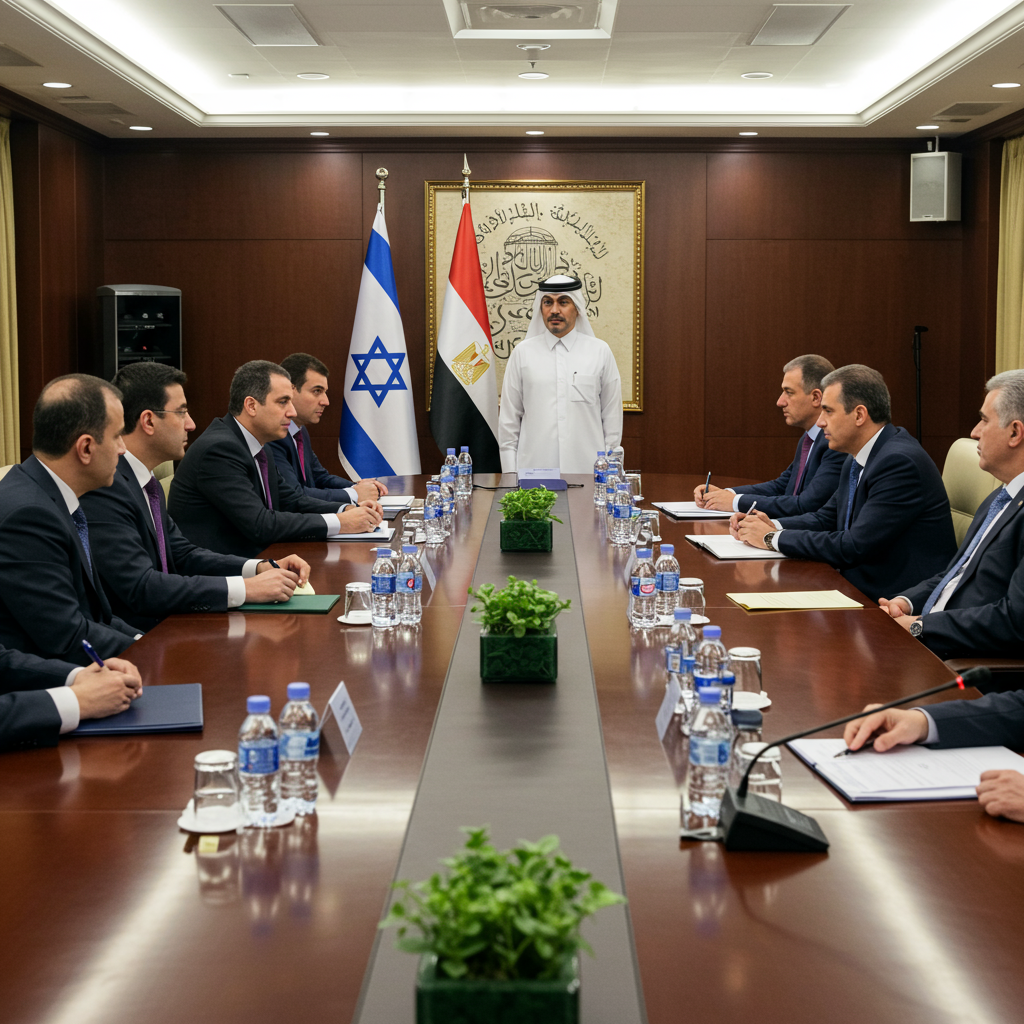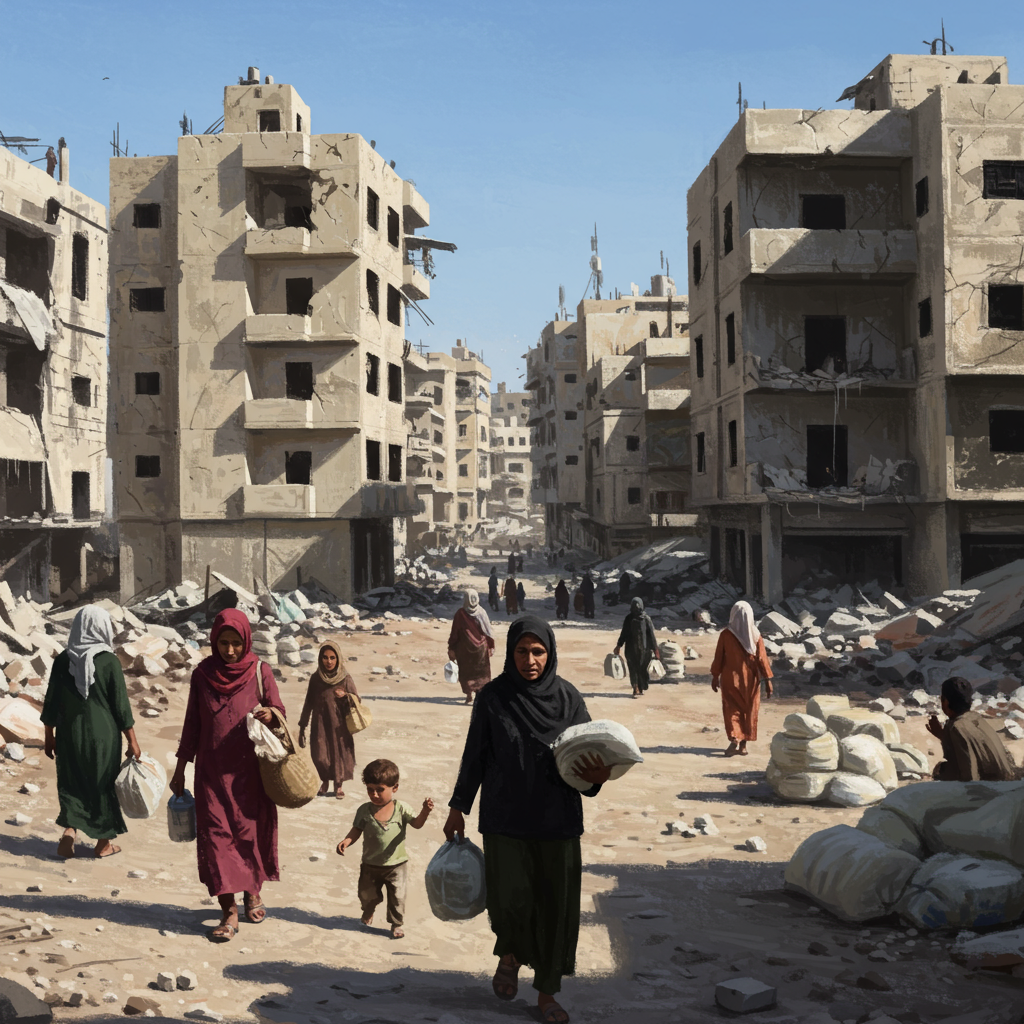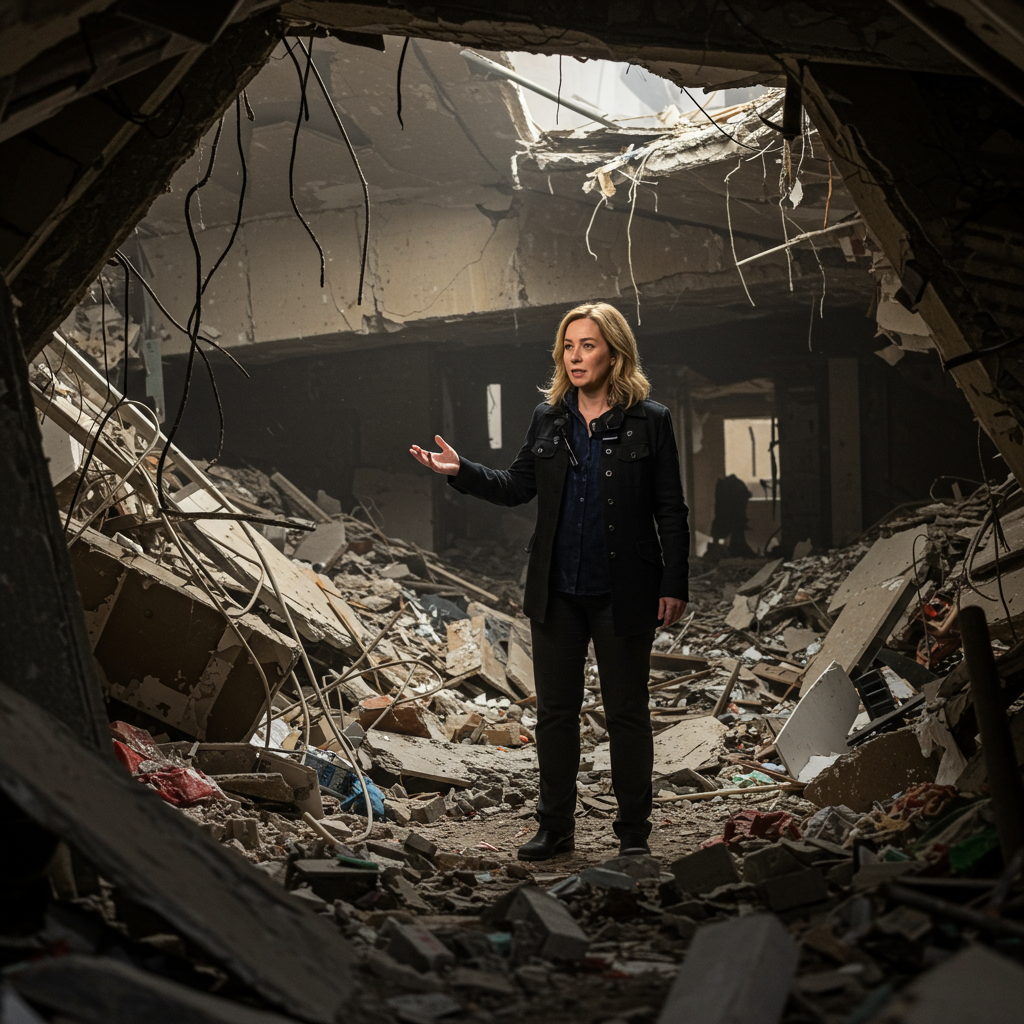Despite rejecting key changes proposed by <a href="https://news.quantosei.com/2025/07/06/israel-to-send-team-to-gaza-talks-despite-hamas-demands-pm-says/” title=”Gaza Ceasefire Talks: Israel Sends Team Despite Hamas Demands”>hamas, Israel has decided to send a negotiating team to qatar. This move signals a cautious step forward in efforts to broker a ceasefire in the ongoing conflict in Gaza. Mediated by Qatar and Egypt, these indirect talks aim to bridge significant gaps remaining in a proposed hostage release and truce agreement. The resumption of negotiations comes at a critical time amidst intense fighting and a worsening humanitarian crisis.
The decision follows Hamas’s formal response to the latest ceasefire proposal. Israel’s Prime Minister Benjamin Netanyahu’s office announced the rejection of the suggested amendments. They deemed these changes “unacceptable.” However, signaling a willingness to continue dialogue, Israel confirmed a delegation would travel to Doha, Qatar. The mission’s objective is to engage in indirect talks with Hamas representatives. Negotiators hope to resolve outstanding disagreements that have stalled previous efforts.
Hamas had earlier described its response to the proposal as “positive.” The group indicated readiness to move towards implementation discussions. This exchange sets the stage for renewed negotiations in the Gulf nation. Mediators from Qatar and Egypt are facilitating the discussions.
Key Issues Blocking an Agreement
Years of indirect talks have consistently faltered over several core disagreements. A primary hurdle remains whether any temporary pause in fighting will lead to a permanent end to the war. Hamas seeks firm assurances of a complete cessation of hostilities. Israel, conversely, is committed to continuing its military objectives. These include dismantling Hamas’s capabilities and ensuring its removal from power. This fundamental difference in endgame vision poses a major challenge.
The exchange ratio of Palestinian prisoners for Israeli hostages is another major sticking point. Hamas demands the release of thousands. This includes high-profile militants. Israel is reluctant to agree to extensive releases. They cite security concerns. The specifics of Israeli troop withdrawal from Gaza also present a significant challenge. Hamas insists on a full IDF withdrawal from the entire territory. Israel maintains a need for ongoing security control in certain areas, like border corridors.
Other points of contention identified in previous negotiation rounds include future governance in Gaza. Israel wants to prevent Hamas from ruling. However, it lacks a viable alternative plan. Hamas demands the lifting of the blockade imposed since 2007. Israel opposes this, fearing it would allow Hamas to rearm. Lack of trust persists on both sides.
Context: Previous Proposals and Sticking Points
Past negotiation rounds have explored multi-phase approaches to resolving the conflict. One proposed plan outlined a three-stage process. Phase one reportedly included a temporary ceasefire, perhaps 42 days. During this period, Hamas would release specific categories of hostages. These included women, children, and elderly captives. Israel would release a larger number of Palestinian prisoners in return. The exchange ratio has been a key point of contention.
This initial phase also aimed to increase humanitarian aid flow. It envisioned initial reconstruction efforts. Discussions for subsequent phases would occur concurrently. Phase two aimed for the release of remaining male Israeli hostages. It also planned for the withdrawal of Israeli forces from Gaza. Phase three involved exchanging the bodies of deceased captives. It also included broader Gaza reconstruction. Opening Gaza’s borders was also a component.
However, these comprehensive plans faced repeated setbacks. Disagreements over the duration of a ceasefire proved particularly difficult. Hamas wants a permanent end. Israel resists this, wanting flexibility to resume operations. The extent of Israeli withdrawal was also a major obstacle. Security concerns regarding areas like the Philadelphi and Netzarim corridors remained unresolved.
The Humanitarian Crisis and Military Context
The backdrop to these diplomatic efforts is the dire and escalating humanitarian crisis in Gaza. Reports from earlier negotiation attempts, such as in May 2025, highlighted intense military operations occurring concurrently with talks. Israeli forces were reported to be expanding ground offensives in areas like Beit Lahiya and Jabalia. This expansion happened despite growing international calls for a ceasefire. Hundreds of Palestinians were killed in air attacks around this period. Medical sources reported significant casualties.
The situation within Gaza has been described in stark terms. Aid delivery remains severely hampered. International aid groups report significant quantities of aid blocked at border crossings. United Nations officials have expressed alarm over the conditions. They criticize plans that don’t address immediate access issues and unimpeded aid flow. Germany voiced deep concern that continued large-scale military action risks worsening the “catastrophic humanitarian situation.” It also endangers remaining hostages and reduces the chances of a lasting truce.
The continuation of intense fighting alongside ceasefire talks underscores the profound challenges facing mediators. While diplomats convene, military actions shape the reality on the ground. This often complicates efforts to build trust and find space for compromise. The international community is increasingly vocal. Calls for an immediate ceasefire resonate globally. Arab League nations have convened to discuss funding for Gaza’s reconstruction. Hamas has called for international sanctions against Israel.
Mediator Efforts and International Pressure
The persistent efforts to find a pathway to peace are heavily reliant on key international mediators. Qatar, hosts of the current talks in Doha, plays a central role. They facilitate communication between Israel and Hamas, who do not negotiate directly. Egypt also acts as a crucial intermediary. Cairo often works in parallel with Qatar on proposed frameworks and logistical arrangements.
The United States has been actively involved at the highest levels. US officials have applied pressure on both sides to reach an agreement. Previous reports indicated specific US proposals were on the table, often coordinated through the Qatari and Egyptian channels. President Trump was noted in earlier contexts as pushing for a deal.
Mediators face the complex task of finding common ground. They must navigate deep mistrust and conflicting ultimate goals. Their success depends on maintaining channels of communication. They also need to present proposals acceptable enough to keep both parties at the table. The international community applies significant pressure on all sides. The hope is that diplomacy can yield a breakthrough that military means have not achieved.
Frequently Asked Questions
What are the primary sticking points in Israel-Hamas ceasefire negotiations?
Negotiations repeatedly stall over fundamental issues. These include the demand for a permanent ceasefire versus Israel’s goal of dismantling Hamas, the number and identity of Palestinian prisoners to be released in exchange for hostages, the timeline and scope of Israeli troop withdrawal from Gaza, and disagreements over post-war governance and border security, including critical corridors and the lifting of the blockade.
Which countries are mediating the indirect talks in Qatar?
The primary mediators facilitating indirect talks between Israel and Hamas are Qatar and Egypt. Qatar typically hosts the discussions in its capital, Doha, providing a neutral ground for the parties to communicate through intermediaries. Egypt also plays a vital role, often working alongside Qatar to propose deal frameworks and manage logistical aspects of any potential agreement, sometimes with the active involvement of the United States.
How does the ongoing military conflict impact ceasefire negotiations?
The continuation of intense fighting significantly complicates diplomatic efforts. Military operations create a volatile environment, reduce trust, and can alter the strategic landscape. The severe humanitarian crisis resulting from the conflict adds urgency but also tension. Actions on the ground can impact the negotiating positions of both sides and sometimes overshadow or derail the progress being made at the negotiating table in Qatar.
As Israeli negotiators head to Qatar, the path towards a Gaza ceasefire remains fraught with difficulty. Significant disagreements persist over key issues. The devastating humanitarian situation and continued military operations add immense pressure to the talks. While the resumption of indirect negotiations offers a glimmer of hope, overcoming the deep-seated mistrust and fundamental differences between the parties will require persistent effort from mediators and flexibility from both sides. The international community watches closely, hoping diplomacy can finally bring relief to Gaza and secure the release of hostages.




